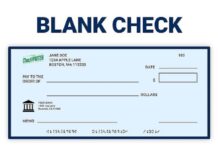For many homeowners, refinancing their mortgage can offer significant financial benefits by securing a lower interest rate and reduced monthly payments. Still, qualifying for a new loan and the best terms available is no simple feat. Lenders impose strict credit and income standards that not all applicants perfectly meet. This is where adding a guarantor to support a refinance application provides value.
A guarantor is a financially established individual, typically with strong creditworthiness, who co-signs the loan documents and pledges to assume responsibility for repayment if needed. Their endorsement helps offset minor shortcomings in a homeowner’s profile that may otherwise lead to denial or higher costs.
However, serving as a guarantor is not a responsibility to be taken lightly. It involves thoroughly evaluating one’s capacity to manage the debt independently while maintaining open communication. In this guide, we will explore all elements involved in refinancing with a guarantor’s aid. We’ll define the refinance process, examine underwriting criteria, and outline obligations for all parties.
Contingency options will also be covered if primary plans fall through. The goal is to provide homeowners and prospective guarantors alike a well-rounded understanding of both benefits and potential risks before moving forward together. With informed decision-making, successful refinances can help qualified households achieve lower housing expenses for years to come.
What Is Refinancing?
Refinancing is essentially the process of obtaining a new loan that pays off an existing one. Homeowners sometimes want to refinance their mortgage for good reasons like taking advantage of lower interest rates in the market or consolidating other high-interest debts into one monthly payment.
This allows you to replace the terms of the old loan with potentially better conditions offered on new loans. Many people refinance to reduce their interest rate by even a fraction of a percent, which can save thousands of dollars in interest over the life of the new loan. Others do it to shorten their loan repayment period to be debt-free sooner.
No matter the motivation, refinancing makes financial sense when you qualify for an interest rate that is significantly lower than the one you have. Lenders carefully assess applicants’ credit histories and debt-to-income ratios to determine eligibility. Only homeowners with high credit scores and stable income streams tend to be swiftly approved.
Those with less than stellar credit may find refinancing more difficult. This is where adding a guarantor can serve to strengthen a marginal application and open the door to better mortgage terms and lower payments. A guarantor acts as a co-signer who pledges to assume responsibility for the debt in the event of default.
When Is a Refinancing Guarantor Needed?
As covered earlier, lenders are very selective when reviewing refinance applications and have clear criteria borrowers must meet to be approved. Chief among these is robust credit scores and sufficient income levels. If you find yourself just shy of the established benchmarks, a guarantor may be able to help boost your approval chances.
Most major banks require a minimum credit score in the mid-600s range or higher to refinance at their best interest rates. However, scores as little as 20-30 points below this can disqualify some applicants right away. Similarly, your debt-to-income ratio (DTI) should not optimally exceed 43-45%. Being over that may lead to automatic denial or higher rates and fees instead. You can learn more about DTI here.
This is where adding a guarantor to your application provides value. A guarantor is someone with very strong, established credit who agrees to co-sign the loan documents with you. Their high credit score – typically above 700 – and earning capacity are then factored together with yours during underwriting by the lender.
Having an additional financially stable party take on co-responsibility for your debt can offset minor deficiencies in your qualifications. The concept of refinansiering med kausjonist (refinancing with a guarantor) reassures lenders of the loan’s strong likelihood to be repaid. This extra endorsement more often than not pushes a borderline application over the edge into approval territory.
How a Guarantor Supports the Application and Their Responsibilities
When a guarantor agrees to cosign a refinance loan, it’s important to understand both how their involvement benefits the application as well as the serious commitments they take on. As a guarantor, your finances will be thoroughly assessed alongside the homeowner’s during underwriting. Your robust credit score, manageable debt levels, and stable income are combined with the applicant’s information.
This joint evaluation allows the strongest aspects of each profile to shine through. For example, if the homeowner has a borderline 680 credit score but you boast a 760, your high rating can offset their minor deficiency. Your low debt balances also help counterbalance higher usage on their accounts. Ultimately, together you present a comprehensive picture of reduced lending risk.
However, cosigning introduces full responsibility for the life of the loan. As a guarantor, you are just as legally accountable for timely payments and the outstanding balance as the homeowner. Should they fall behind or default, the lender can pursue you separately through collections, credit impacts, legal fees, or asset seizure. You also commit to covering any shortfalls if the property is foreclosed on but fails to sell for the total owed amount.
Essentially, failure to maintain the debt could severely damage your own finances and credit standing for years. Entering this commitment demands absolute certainty in your long-term capacity to assume the payments independently if needed.
Evaluating the Guarantor’s Ability to Assume Debt
Given the significant responsibilities involved, it is crucial for the homeowner to thoroughly vet any prospective guarantor’s finances before adding them to the refinance application. After all, the strength of the guarantor is central to the lender’s approval decision. Some key due diligence should include:
Income
The guarantor’s current gross monthly income should be high enough to independently support taking on the loan amount, where necessary. Stable long-term work and earning potential are preferable over seasonal incomes.
Credit Profile
Pull and review a recent copy of the guarantor’s credit report to ensure there are no inaccuracies, late payments, collections, etc. An excellent credit score over 700 indicates low lending risk.
Debt & Obligations
Assess monthly liabilities like mortgages, auto loans, credit cards, and student loans. The total debt load should not exceed 43-45% of the gross income. Room needs to exist for adding another sizable payment.
Reserves & Assets
Guarantors should demonstrate ample savings and investment funds to cover some of the combined loan payments as financial backing.
Stability
Conduct reference checks for employment longevity, housing tenure, and personal relationships. Lenders want stability prospected into the long term.
Being meticulous on each of the above fronts helps vet a guarantor’s true qualifications and gives peace of mind they can reasonably manage the loan independently if needed. An ill-equipped guarantor can risk the entire refinance process.
Terms of the Loan for All Parties
When a guarantor is added to a refinance application, everyone must understand the full scope of the agreement. The homeowner should arrange a sit-down with both the lender and guarantor present to ensure a transparent discussion of key loan aspects, including:
Interest Rate
What exact interest rate percentage will apply for the new loan’s full term? Are there conditions that could cause it to change?
Closing Costs
Upfront fees associated with originating the loan must be clear for the guarantor’s knowledge and approval as well.
Loan Term
How many years will it take to pay off the balance in full? The guarantor needs clarity on the timeline for responsibility.
Payment Amount
What figure is owed monthly? When is it due and are late fees assessed? How long must auto-payments continue?
Post-Closing Obligations
Any future conditions like keeping taxes/insurance current, occupancy clauses, or annual financial disclosures should be addressed.
Removal Process
What guarantees or approvals must take place for the guarantor to be formally released from their role years down the line?
All have a bearing on the commitment being undertaken. Addressing these explicitly helps avoid future conflicts or assumptions.
Final Notes
Refinancing a home loan with the support of a guarantor is a meaningful option for many homeowners. When circumstances require extra strength for an application, a guarantor’s solid financial credentials can tip the scales into approval. However, it is important for both parties to fully comprehend the serious responsibilities involved before signing loan documents jointly.
A thorough evaluation of creditworthiness, income, and long-term abilities on both sides is necessary due diligence. With transparency and open communication firmly in place, the guarantor role can develop into a mutually beneficial partnership that lasts the duration of the new refinance term.
Ultimately, those willing to handle this undertaking with care, commitment, and cooperation can gain much through greater access to lower interest rates and reduced housing expenses. By shoring up applications just shy of standards, guarantors empower qualified fellow citizens to increase long-term financial fitness through the act of cosigning.
Read Also: Siacoin SC: Decentralized Cloud Storage and File Sharing
































































